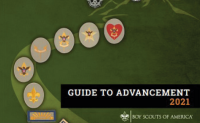 A lot of us work for fairly large companies where our coworkers number from a few dozen to a few thousand, and every now and then the top management holds an “all hands” meeting to pass along information that is of importance to everyone in the organization. A recent article in Harvard Business Review touches on the responsibility of a company’s top leaders to communicate essential (and sometimes not so essential, but nonetheless interesting) knowledge. Many use it as a reinforcement of the organization’s mission. Some even treat it as a social happening. The article focuses on the how, what, who and when of communicating with staff.
A lot of us work for fairly large companies where our coworkers number from a few dozen to a few thousand, and every now and then the top management holds an “all hands” meeting to pass along information that is of importance to everyone in the organization. A recent article in Harvard Business Review touches on the responsibility of a company’s top leaders to communicate essential (and sometimes not so essential, but nonetheless interesting) knowledge. Many use it as a reinforcement of the organization’s mission. Some even treat it as a social happening. The article focuses on the how, what, who and when of communicating with staff.
In Scouting, we don’t have too many occasions for such a meeting, other than the massive council leadership meetings for district and council volunteers that many councils hold quarterly – meetings that few unit scouters attend. However, the article has some great advice for leaders in organizations large and small, to help in communicating with everyone, and as a committee chair or Scoutmaster, you can use these techniques to keep your committee or Scoutmaster staff informed.
- A leader blog. Here, you can post news of what’s going on in the unit, with the chartered organization, and at the district and council. With a blog, people usually have to come to you (or you have to pull them in), but they are easy to set up. Maybe you can have a page on your unit’s website, or just set up a special Facebook page. Just keep it to troop or pack business, with things of interest in the Scouting context (and not that you’ve become the Mayor of McDonalds at Third and Walnut). You could also have a column in your unit’s newsletter.
- A periodic e-mail. Similar to the blog, but pushed out, a “newsletter from the chairman” can recap all the doings that others have been up to in the past week or month. The membership chair reports that five new scouts have joined; the advancement chair received several completed blue cards; the equipment chair and Quartermaster have loaded the tents for summer camp onto the troop trailer, and the chairman and Scoutmaster met with the unit commissioner about new facilities at the council camp. Such a newsletter can eliminate or reduce the need for reports to be given at committee meetings, which often tend to gobble up way too much time.
- Walking around. The scenario in the article is that the big boss visits around the office, not to check up but to see firsthand how things are going and how she can be helpful. You don’t have a “workplace” as such, but go around at troop meetings and chat with the other committee members and parents. Keep yourself accessible and keep the Scouting process transparent so everyone will feel like they are included.
Here are a couple more techniques that we can use to be more connected to our unit’s adults:
- Fellowship. Don’t overlook the opportunity for your adults to get together in a social setting. It could be cracker barrel at a campout, or after a committee meeting. You could even have a gathering once or twice a year and talk about things besides Scouting. You might discover something about your parents that you didn’t know, and that might be useful in the troop.
- Service. The function of a top leader is to help others succeed. Pitch in and give a hand where needed. Offer rides to events, such as camp staff meetings, Roundtables, or OA activities. Make a run to your clubhouse or storage for someone, send a letter or make a call if it would help someone out. Get answers from your commissioner or talk something over with top leaders in other units.
By offering a model of good communication, we can also help the youth leaders in a troop or crew by showing them how it’s done. They have their own ways of communicating, but if they see the adults openly communicating, they are more likely to do the same.
Keeping lines of communication open boils down to sharing the knowledge that not only you have, but that others have. You may not need an “all hands” meeting to do so, but you can serve as the communications point person for your unit.
Image: Vlado / FreeDigitalPhotos.net




